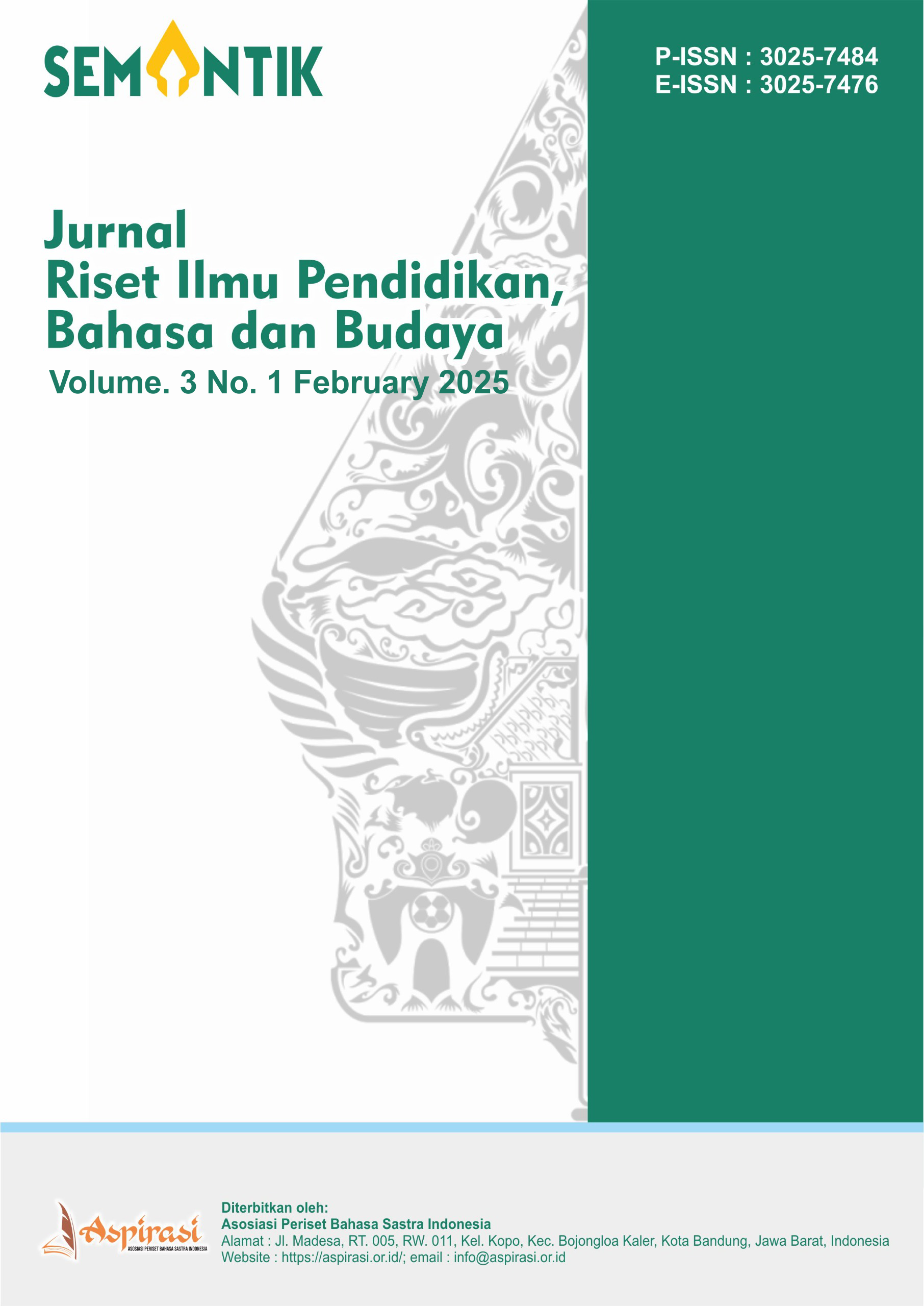Optimalisasi Motorik dan Pemahaman IPAS Siswa melalui Permainan Hula Hoop Inovatif dalam Kegiatan Pramuka Siaga di MIS Dadirejo
DOI:
https://doi.org/10.61132/semantik.v3i1.1378Keywords:
Motor, Understanding, IPAS, Hula-Hoop, Scouting, StandbyAbstract
This study aims to integrate the learning of Natural and Social Sciences (IPAS) with the traditional hula hoop game in Pramuka Siaga extracurricular activities at MIS Dadirejo. The research employs a qualitative approach with a descriptive design. The subjects of the study include fourth and fifth-grade students actively participating in Pramuka activities. Data collection techniques involve observation, interviews, and documentation. The findings reveal that the innovative use of hula hoop games can enhance students' motor skills, such as body coordination and balance, as well as their understanding of concepts like force, energy, and gravity taught in IPAS subjects. The implications of this study emphasize the importance of integrating traditional games into active learning to simultaneously improve students' physical and academic skills.
Downloads
References
Anjarsari, E., Hobri, H., Irvan, M., & Sunardi, S. (n.d.). SAMPLE. SAMPLE, 75.
Ardianita, R., & others. (2021). Pengembangan permainan hulahop untuk meningkatkan koordinasi dan keseimbangan fisik motorik anak. UIN Ar-Raniry.
Balakrishnan, M. (2011). Effects of teaching games for understanding approach on students’ learning outcomes. University of Malaya.
Bennett, E., & Dyck, M. (2023). Active games for children on the autism spectrum: Physical literacy for life. Human Kinetics.
Bi, D., Lu, J., Wei, Y., & Sun, T. (2022). Numerical analysis of factors influencing freely falling annular disks in an infinite fluid. Physical Review Fluids, 7(5), 54702.
Buckley, F., & Reidy, T. (2014). Practicing politics: Student engagement and enthusiasm. European Political Science, 13, 340–351.
Christanty, Z. J., & Cendana, W. (2021). Upaya guru meningkatkan keterlibatan siswa kelas K1 dalam pembelajaran synchronous. COLLASE (Creative of Learning Students Elementary Education), 4(3), 337–347.
Efendi, M., Tahar, M. M., Pradipta, R. F., & Ummah, U. S. (2020). Utilizing multimedia-based learning materials in scouting education program for deaf students. In 2020 6th International Conference on Education and Technology (ICET), 70–76.
Ennos, R. (2023). The science of spin: The force behind everything—from falling cats to jet engines. Simon and Schuster.
Farbo, D. J. (2022). The effects of outdoor, unstructured play on physical activity and obesity rates in children. Texas Christian University.
Fasanella, J. (2020). How can incorporating games and activities enhance learning in environmental education?
Kilag, O. K., Marquita, J., Laurente, J., & others. (2023). Teacher-led curriculum development: Fostering innovation in education. Excellencia: International Multi-Disciplinary Journal of Education, 1(4), 223–237.
May, T., & Perry, B. (2022). Social research: Issues, methods and process. McGraw-Hill Education (UK).
Moshood, T. D., Nawanir, G., Mahmud, F., Mohamad, F., Ahmad, M. H., & AbdulGhani, A. (2022). Sustainability of biodegradable plastics: New problem or solution to solve the global plastic pollution? Current Research in Green and Sustainable Chemistry, 5, 100273.
National Academies of Sciences, Division of Behavioral and Social Sciences, Board on Science Education, Board on Behavioral and Sensory Sciences, & Committee on How People Learn II. (2018). How people learn II: Learners, contexts, and cultures. National Academies Press.
Pakaya, W. C., Sutadji, E., Bela Dina, L. N. A., Rahma, F. I., Mashfufah, A., Ayu, I. R., & others. (2023). Metode penelitian pendidikan. Nawa Litera Publishing.
Paul, R., & Elder, L. (2019). The thinker’s guide to scientific thinking: Based on critical thinking concepts and principles.
Prince, M., Felder, R., & Brent, R. (2020). Active student engagement in online STEM classes: Approaches and recommendations. Advances in Engineering Education, 8(4), 1–25.
Rustamana, A., Rohmah, N., Natasya, P. F., & Raihan, R. (2024). Konsep proposal penelitian dengan jenis penelitian kualitatif pendekatan deskriptif. Sindoro: Cendikia Pendidikan, 5(5), 71–80.
Satria, E. (2020). Improving students’ scientific skills, cognitive learning outcomes, and learning interest in natural science in class IV by using brain-based learning approach with science kit at SD Negeri 34 Kuranji Padang.
Simanjuntak, M. D. R. (2019). Membangun ketrampilan 4 C siswa dalam menghadapi revolusi industri 4.0.
Suhartini, B., & Kushartanti, B. M. W. (2022). Development of physical activity models based on motor perception for kindergarten children. Int. J. Hum. Mov. Sport. Sci, 10(1), 6–13.
Szabo, D. A. (2021). The importance of motor behavior and balance training in the acquisition of physical activity/sports-related motor skills among children—Review. Health, Sports & Rehabilitation Medicine, 22(4).
Ucus, S. (2015). Elementary school teachers’ views on game-based learning as a teaching method. Procedia-Social and Behavioral Sciences, 186, 401–409.
Young, A. J., Silliman-French, L., & Crawford, L. (2017). Yoga for young children with Down syndrome. Palaestra, 31(3).
Downloads
Published
How to Cite
Issue
Section
License
Copyright (c) 2025 Semantik : Jurnal Riset Ilmu Pendidikan, Bahasa dan Budaya

This work is licensed under a Creative Commons Attribution-ShareAlike 4.0 International License.





